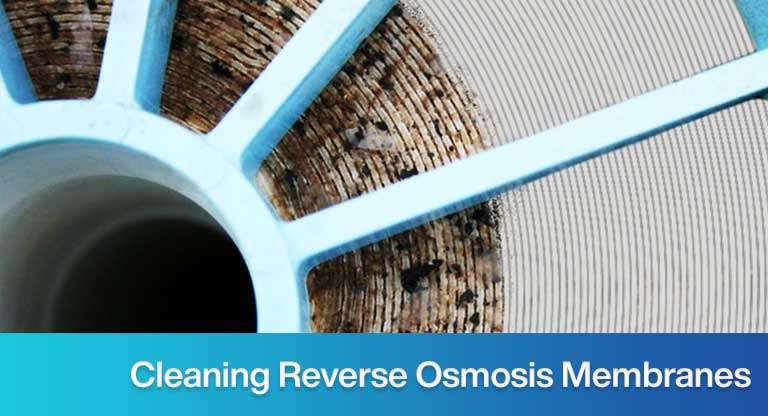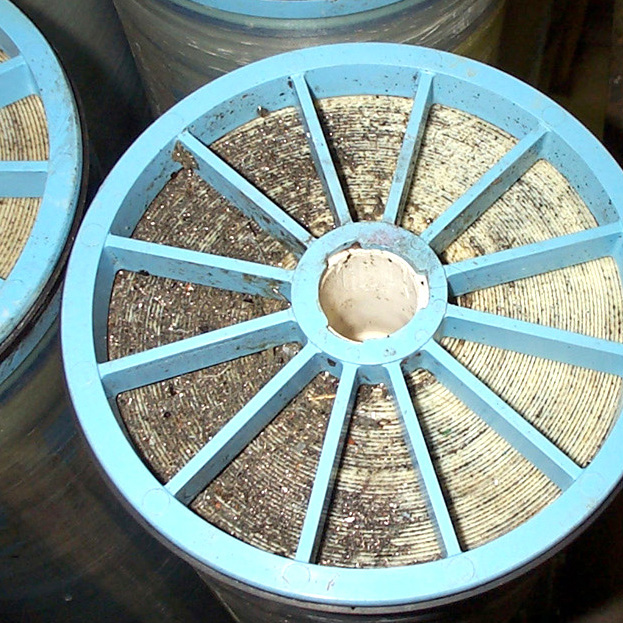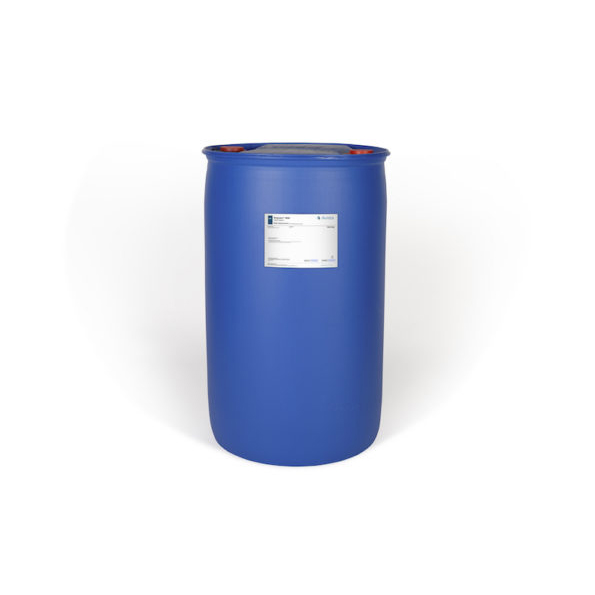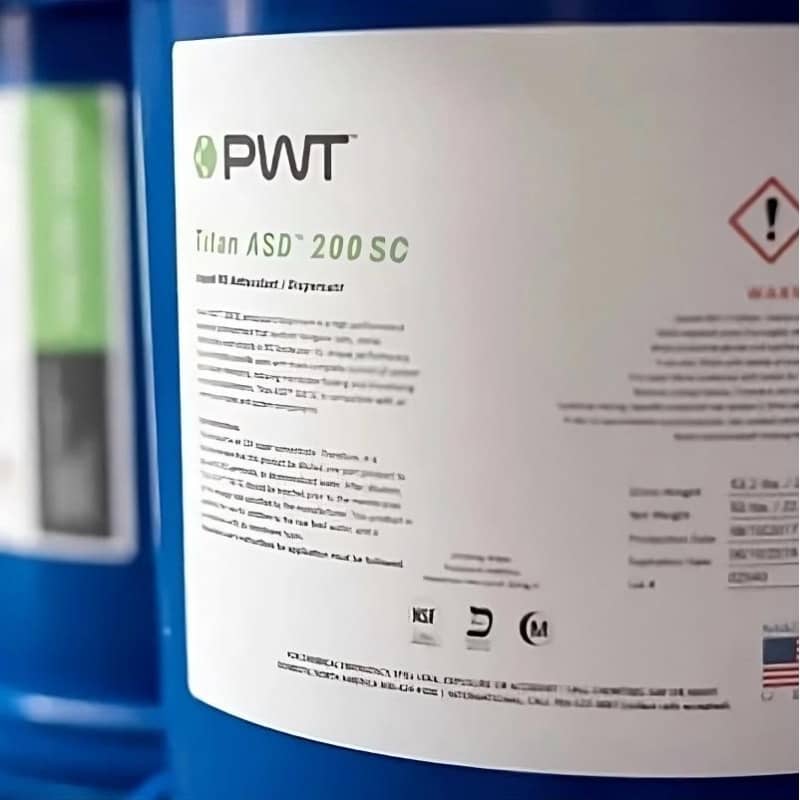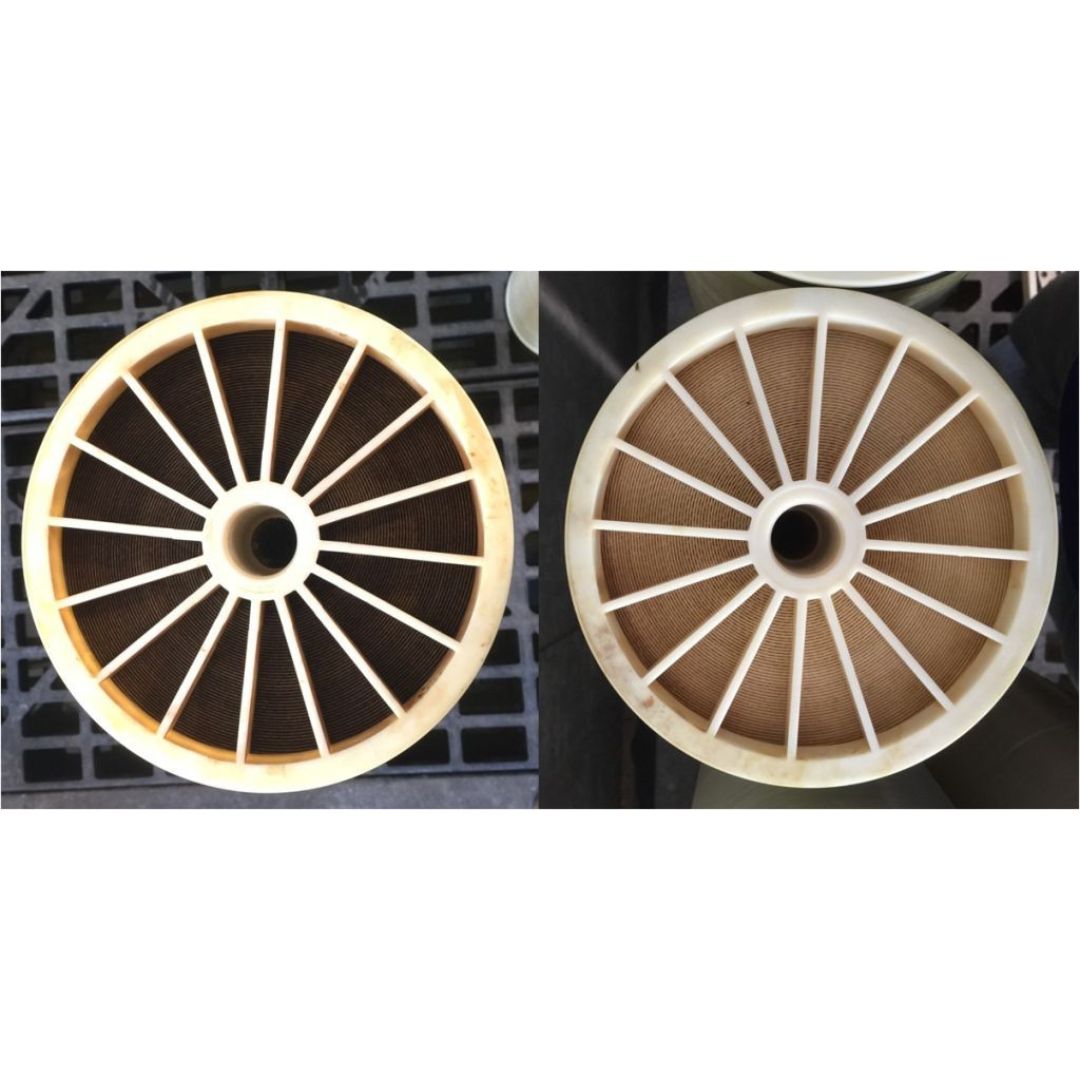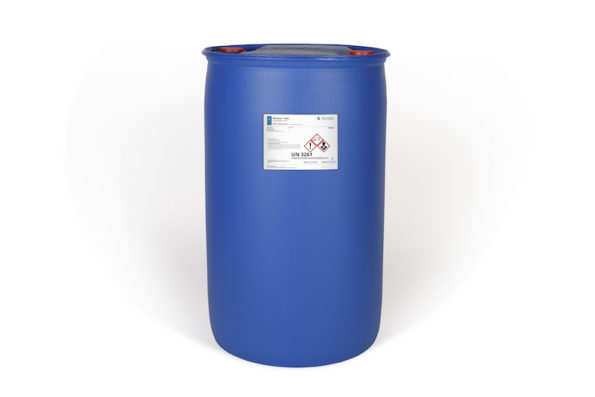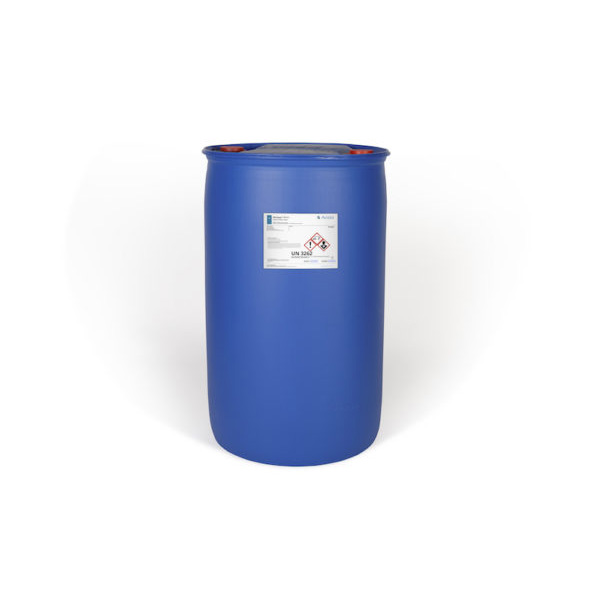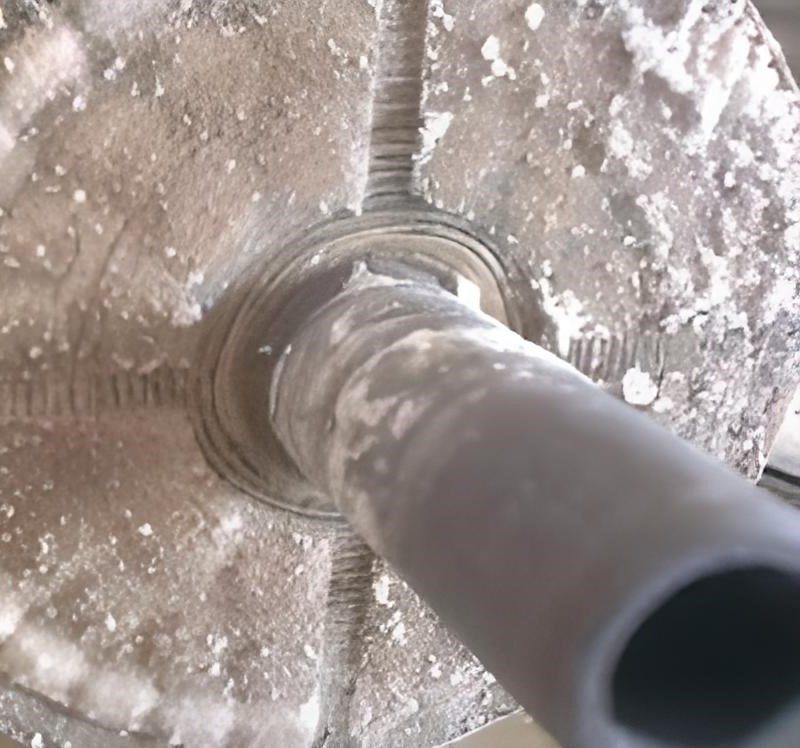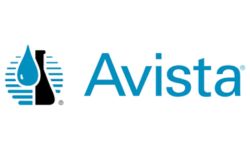Cleaning the Reverse Osmosis membranes.
Membrane fouling is a normal phenomenon in reverse osmosis (RO) systems. It is reversible when a chemical cleaning is done correctly and on time; and it is not in the opposite case.
Signs that a chemical cleaning is necessary are:
- When the permeate flow decreases by 10 to 15%.
- When the pressure differential increases from 10 to 15% the pressure differential, calculated from the pressure in the feed stream minus the pressure in the reject stream.
- When the rejection of salts decreases between 1 and 2% (this is calculated with the feed and permeate flows, and with the concentration of total salts dissolved in both).
The frequency with which it is required to clean the RO reverse osmosis membranes depends on: the concentration of salts in the feed water, the correct pre-treatment of the same and the percentage of rejection with which the equipment is operated. An acceptable cleaning frequency is between 3 and 12 months.
Soiling can be caused by:
- Carbonates, sulfates and / or silicates.
- Metal oxides of iron, manganese, aluminum, etc.
- Organic material.
- Biological matter (growth of bacteria, mold, fungi, etc.).
In the case of the first two groups, the fouling is due to the precipitation of these salts, which is greater the closer their concentrations approach the solubility limit in the rejection.
The fouling by organic matter is due to the accumulation of it, and which is greater the higher its concentration. And fouling by biological matter occurs when microorganisms impinge on the membrane and encounter biodegradable organic matter.
The effectiveness of chemical cleaning depends largely on the choice of cleaner or cleaners. There are specific compounds for each type of fouling. In general, acid solutions facilitate the dispersion of the inorganic pollutants that constitute the first two groups; while the constituents of the third and fourth group are removed with alkaline solutions.
When the chemistry of the feed water is known, the nature of fouling can be predicted. The first time cleaning is required, it is recommended to contact a specialist.
Before cleaning, there are important points to consider:
- Review the cleaner manufacturer’s recommendations: dosage, pH, temperature, standing and agitation times.
- Check the compatibility of the cleaner (s) with the membrane manufacturing materials.
- Be careful when preparing the solution with the cleaner to avoid going outside the recommended pH range. A range between 4 and 10 does not cause any damage to the membranes. If the degree of fouling requires more aggressive solutions, remember that pH values between 2 and 4, or between 10 and 12, can cause damage to the membrane if cleaning is exceeded a certain time.
- Do not mix acidic and caustic solutions. Be sure to rinse each cleaning solution well before introducing the next solution.
- In multi-stage systems, it is advisable to wash each stage separately.
- Clean in an area with adequate ventilation.
- All materials that make up the cleaning system must be resistant to chemical corrosion.
- The tank must be of adequate size to hold the cleaning solution. It is recommended to use a volume of 5 gallons per 4 × 40 ”membrane and 20 gallons per 8 × 40” membrane. The tank in which the solution is prepared must be easily accessible. The piping arrangement should allow recirculation and recirculation should discharge to the bottom of the tank to minimize foaming.
- The pump must be adequate to provide the required flow and pressure. The maximum recommended pressure is 60 psi. Too high a pressure does not allow solids or impurities to escape from the surface of the membrane. The flow should not be greater than 40 gpm for an 8 × 40 ”membrane, and 10 gpm for a 4 × 40” membrane.
- It is recommended to use a 5 to 10 micron cartridge filter to retain the solids released during cleaning. It must be placed in the re-circulation line to the tank. It is important to monitor the differential pressure at this point, and replace the cartridge upon reaching a differential pressure of 15 psi.
- It is essential to have sampling points and pressure gauges that allow pH and pressure measurements to be made at the pump discharge and in the re-circulation return line. The pH change is to be expected: it means that the contaminants are reacting with the cleaning solution. When detecting a change greater than 5 pH units, adjust to the initial pH value of the solution with the cleaning chemical.
The most used indicator to determine when to stop cleaning is when the pH no longer undergoes changes, which means that pollutants are no longer dispersed.
RO cleaning procedures vary depending on the particularities of each system.
The basic cleaning steps are:
- Fill the tank with the volume of water necessary for the size and number of membranes to be cleaned. Use permeated or at least softened water.
- Add the cleaning agent according to the manufacturer’s instructions. Use a mechanical agitator or recirculate in the tank, to ensure that the solution is completely homogeneous. IT IS IMPORTANT TO ALWAYS ADD THE CLEANING AGENT TO THE WATER AND NOT TO THE RÉVES, TO AVOID REACTIONS THAT COULD PUT YOUR SAFETY AT RISK.
- If possible, heat the solution without exceeding 40 ° C, for the most effective results. Consult membrane temperature restrictions.
- With the reject valve fully open, introduce the cleaning solution. Regulate the feeding speed with a valve at the pump discharge, with the intention that the solution entry speed is gradual. Recirculate for 30 to 60 minutes.
- Monitor pH and pressure at least every 15 minutes, at the inlet and outlet of the membrane. It is recommended to keep this information in an equipment maintenance log.
- When the contamination is excessive, it is recommended to leave the membranes flooded in the cleaning solution and rest for the necessary time, which can vary between 45 min and 8 hours. Considering that the solution is highly aggressive and prolonged exposure could damage the membrane. Another option is, after the flooding at rest, do a second recirculation, follow the same recommendations in points 4 and 5.
- For rinsing, use low pressure permeated or softened water and send to the proper disposal system. An effective way to determine when to stop rinsing is to use a TDS meter. The criterion for terminating the rinse is when the SDT value is equal at the inlet and outlet.
- To return the RO to service, first return the reject valve to its normal position, commission and monitor the water quality. It is normal that it takes a while for the quality of the permeated water to stabilize.
If even after cleaning you do not obtain the expected quality or flow for the system, it is necessary to contact a specialist to rule out that the membrane has irreversible contamination or that it is broken.
Update: September 30, 2019
Related articles:
What is reverse osmosis?
What is ultrafiltration?
What is nanofiltration?
Introduction to sediment filtration in liquids
Sources:
Wes Byrne, Reverse Osmosis a practical guide for industrial user, 2nd Ed., Talk Oaks Publishing Inc., Littleton, CO, 2002.
Comparte:
Necesitas más información, escríbenos.
Algunos productos que te pueden interesar
-
RoClean L211 cleaning of membranes with organic matter fouling
Add to quote -
RoQuest 3000 Organic Liquid Coagulant from Avista
Add to quote -
Titan Antifouling for Reverse Osmosis Membranes
Select options -
RoClean P112 Membrane Cleaner for Silica SiO2
Add to quote -
RoClean P303 Calcium Carbonate & Metal Scale Cleaner
Add to quote -
RoClean P111 Biofouling RO Membrane Cleaner
Add to quote -
RoClean L403 Calcium Carbonate and Metal Scale Cleaner by Avista
Add to quote -
RoQuest 4000 Liquid Coagulant for Organic Matter Avista
Add to quote

